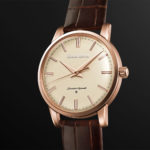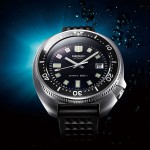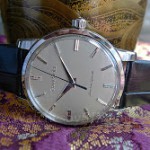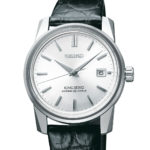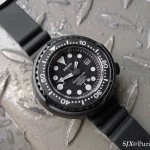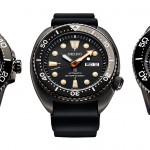Hands-On: Seiko Prospex 1959 Alpinist Re-creation
An appealing, compact sports watch.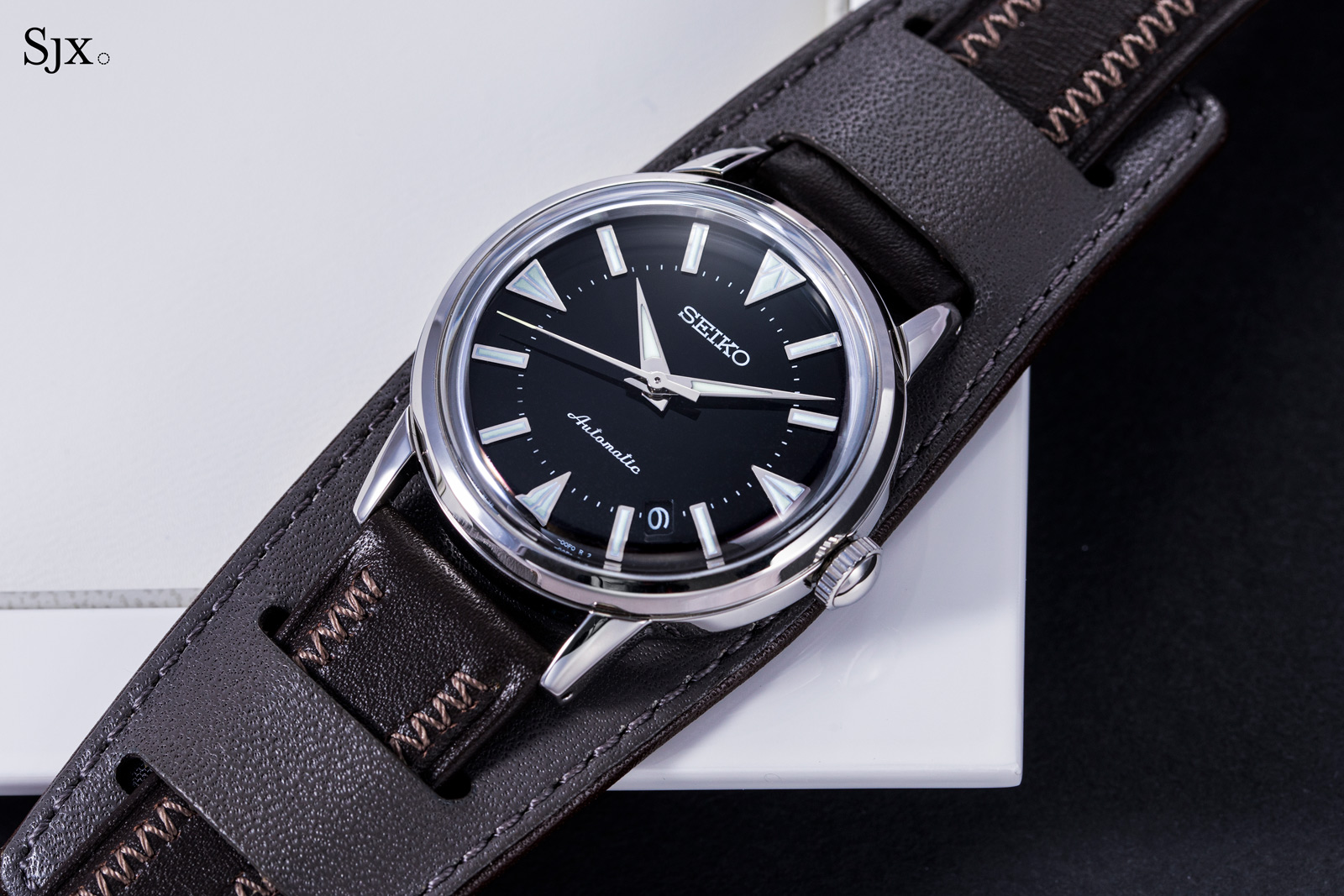
Most familiar with its metallic, forest-green dial, the modern-day Seiko Alpinist is a mid-range model that’s long been a crowd-favourite for its distinctive design and affordability.
But today’s Alpinist with its distinctive twin crowns, a design introduced in 1998, couldn’t be further from the original Laurel Alpinist that debuted over half a century ago as a sports watch catered to mountaineers.
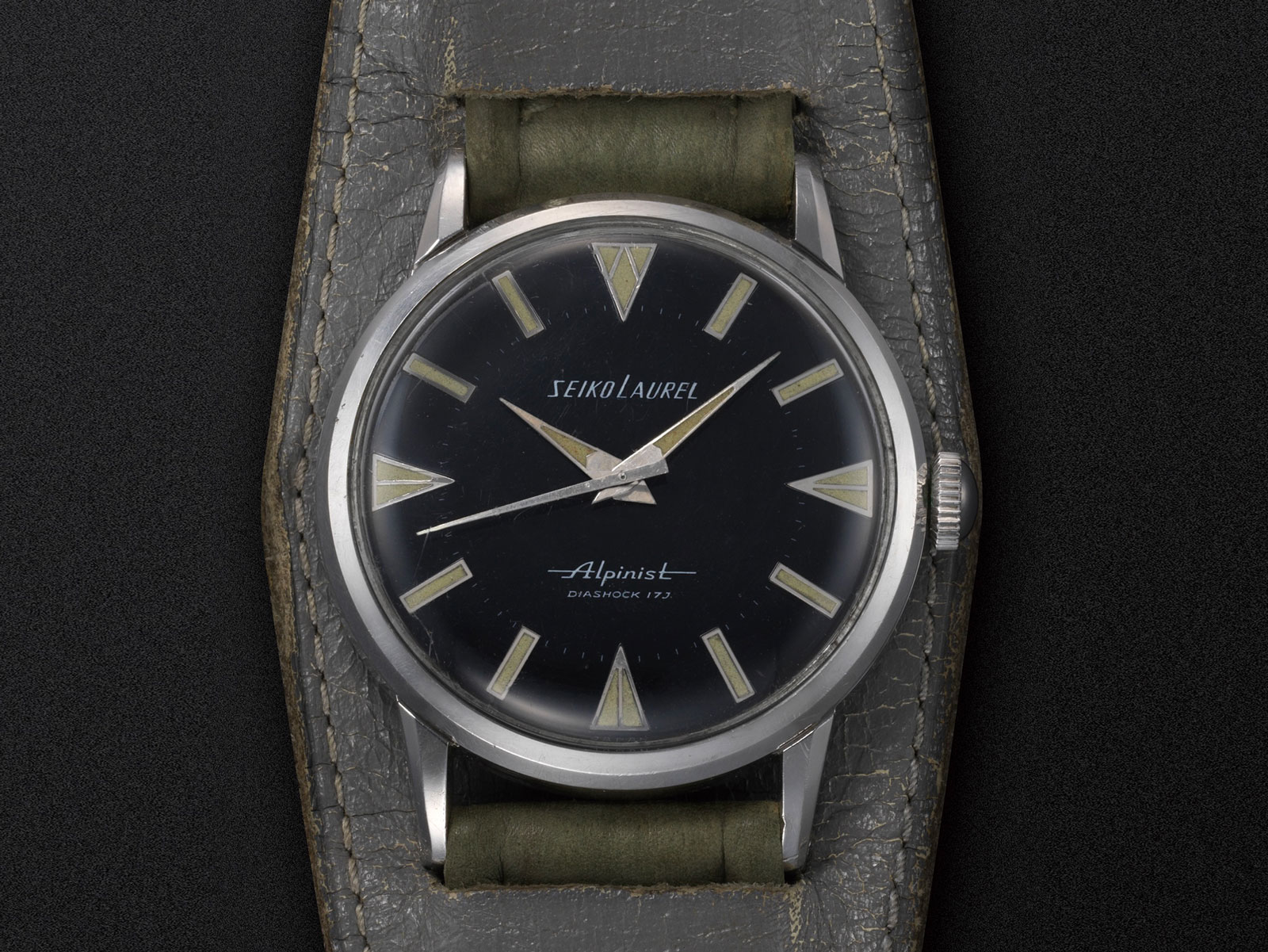
The original Alpinist of 1959. Photo – Seiko
Seiko has successful grown the current Alpinist line up to encompass a diversity of models – all of which feature alternating Arabic and arrowhead hour markers – but finally returned to the original design of 1959 with a quartet of vintage-inspired reissues that were launched earlier in the year.
Amongst the four, the standout is the Prospex 1959 Alpinist Re-creation (ref. SJE085 or SBEN001), which is almost a like-for-like reissue (the other remakes are more loosely based on the original and officially known “Re-interpretations”).
Most closely resembling the vintage original, the Alpinist Re-creation is the flagship model of the remakes, having a more elaborate execution as well as a higher-end movement.
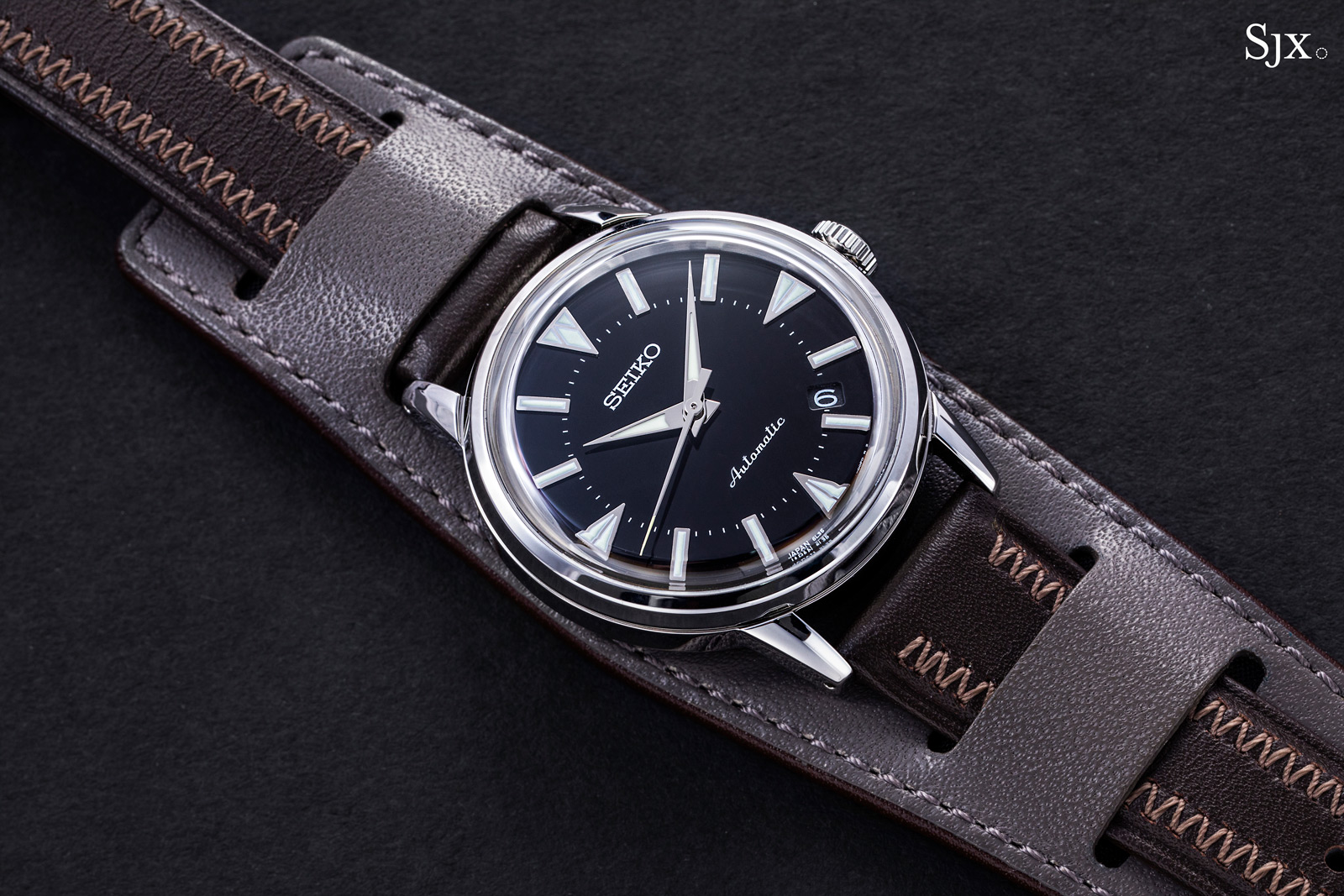
A cool “Bund” style strap with zigzag stitching evokes the strap on the 1959 original
Initial thoughts
The Alpinist Re-creation is an appealing little watch that’s almost straight out of a 1950s watch catalogue – save for the date window – thanks to the smallish 36.6 mm case and retro-style dial.
It certainly helps that the original design is one that remains appealing today. Though look is clearly mid 20th century, it is handsome and sporty. The style is cool retro rather than dated. And the simple but stark dial is striking and distinctive, proving that wrist presence does not necessarily stem from a large case.
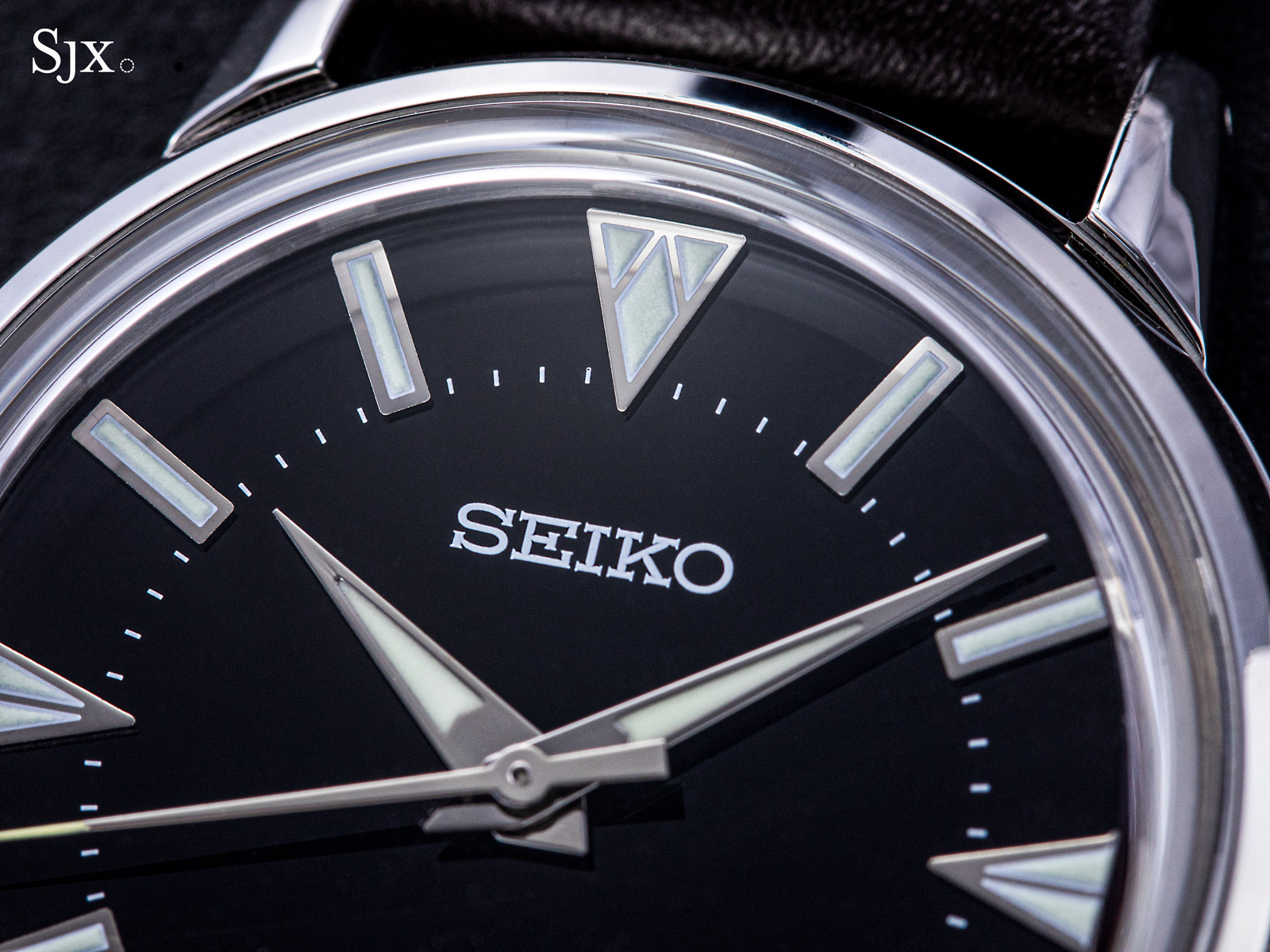
Its clean design and compact size means the Alpinist Re-creation perhaps the most unusual Seiko release of the year, given that most of the brand’s remakes have been large dive watches. In fact, the minimalist style of the Alpinist is rare amongst Seiko’s current offerings.
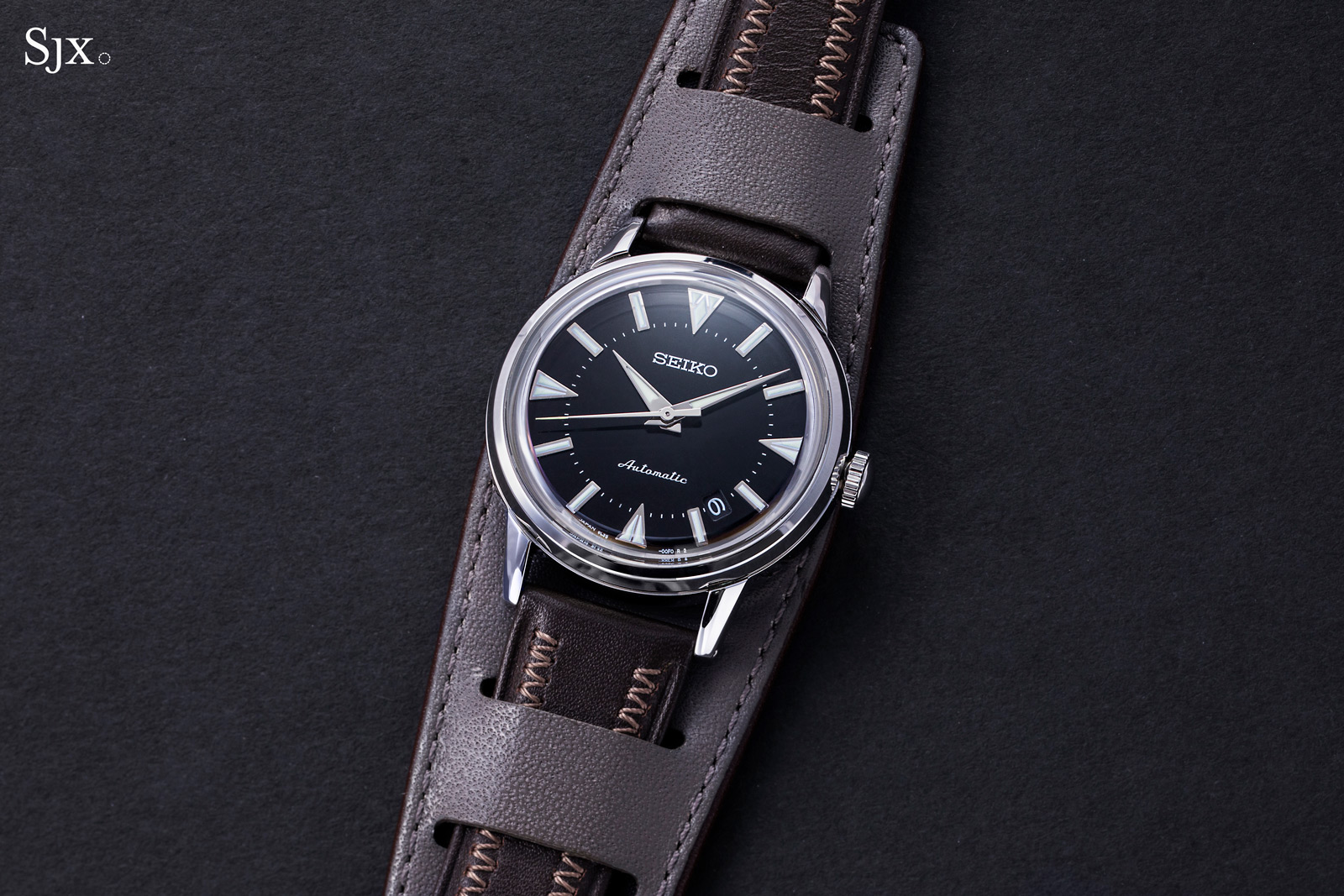
Another feature that makes the Alpinist Re-creation notable is the cal. 6L35 inside, one of the highest spec’d mechanical movements from Seiko in this price range.
While the cal. 6L35 is not as sophisticated as the 9S-family of calibres found in Grand Seiko watches, it’s notably thin for a Seiko movement at just 3.69 mm high. That results in a case that’s only 11.1 mm, which is thin for a Seiko sports watch.
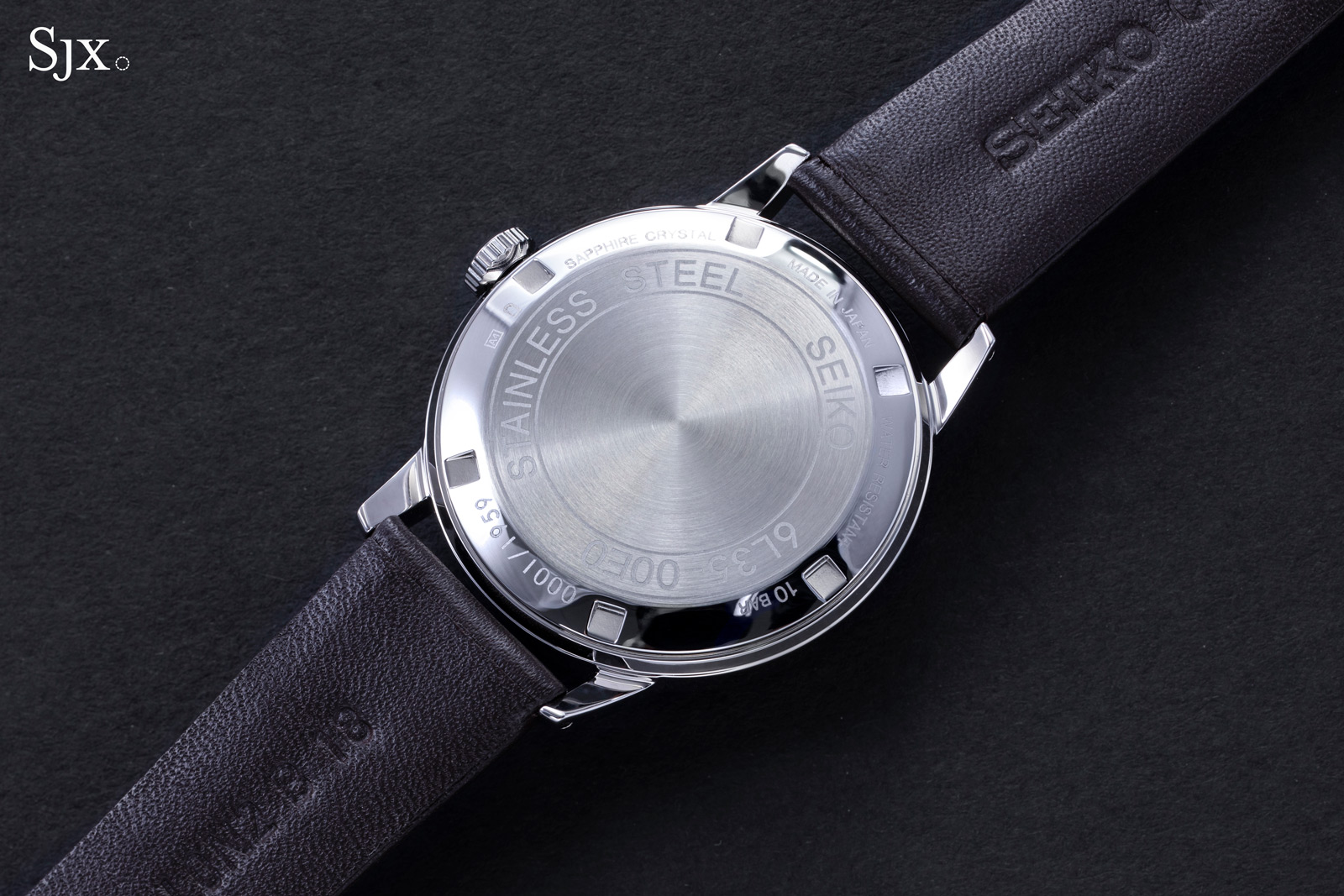
The Alpinist Re-creation has a solid back – uncommon for a mechanical Seiko
Priced at US$2,850, the Re-creation is a lot of money for a mid-range Seiko. The sum is by no means exorbitant, but the watch does feel like less of a value proposition a Seiko typically is.
That said, the look and historical identity are both on point – there’s nothing quite like it on the market – so the question is does the fit and finish live up to the price?
Not quite, as we explain below, but the Alpinist Re-creation possesses considerable charm, perhaps enough to make it forgivable.
Compact and charming
The case diameter is close to that of the 35 mm vintage original, but slightly enlarged to 36.6 mm. By contemporary standards it is still small – in fact this is one of smallest Seiko sports watches of recent years – which is good news for collectors who fancy retro-sized cases.
And it is also slim, but the case design still manages to incorporate some nuance in its form. It has an elegant profile, with a narrow case middle that calls to mind today’s Credor dress watches (that are even thinner). The case does have a relatively tall, sloping bezel and similarly sloped case back that ensure it still feels like a sporty watch.
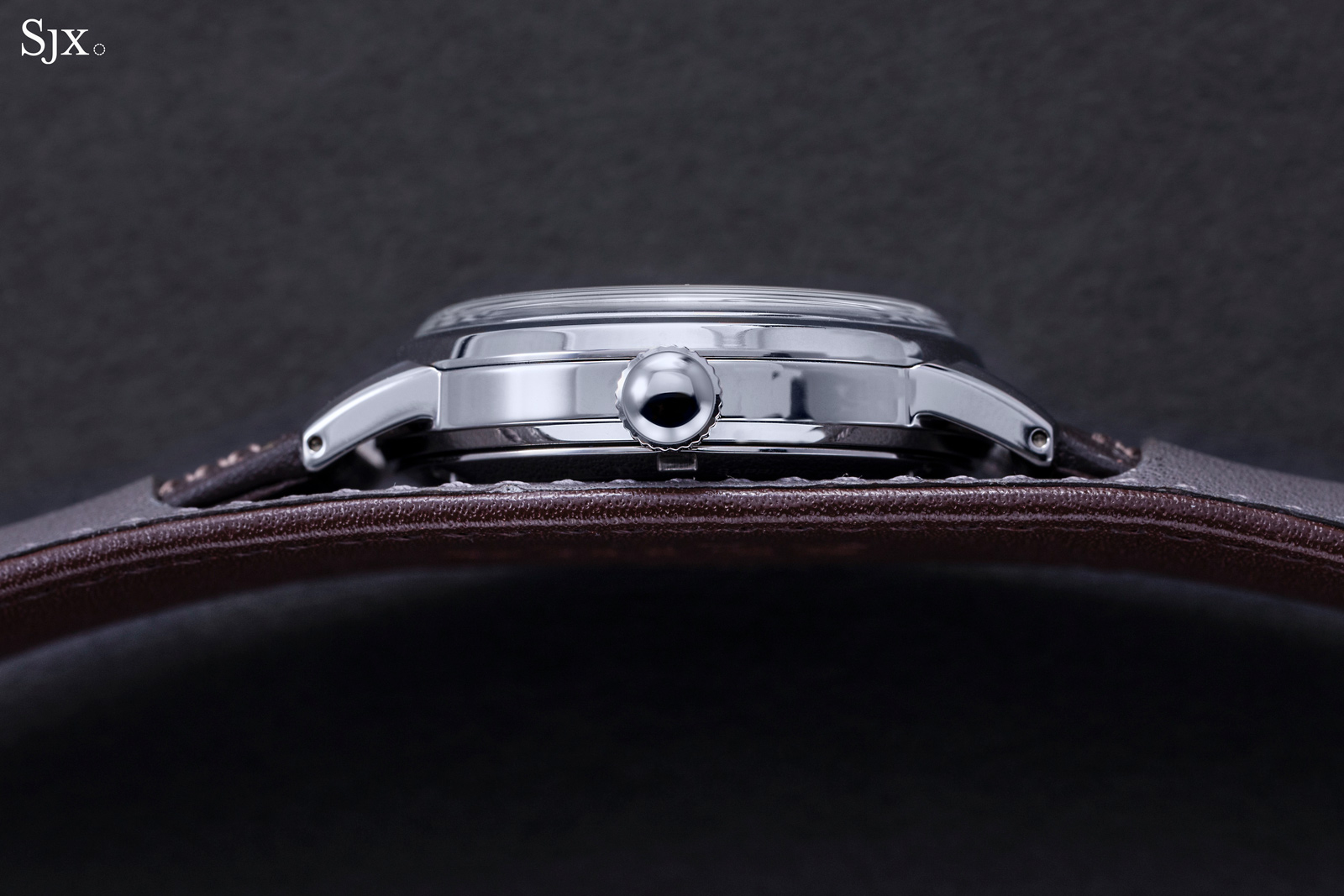
Amongst the other appealing, vintage-style designs is the unsigned crown, which is typical of Seiko. It replicates the look of the original, wide but flat with a domed, polished top, giving it a convincing vintage feel.
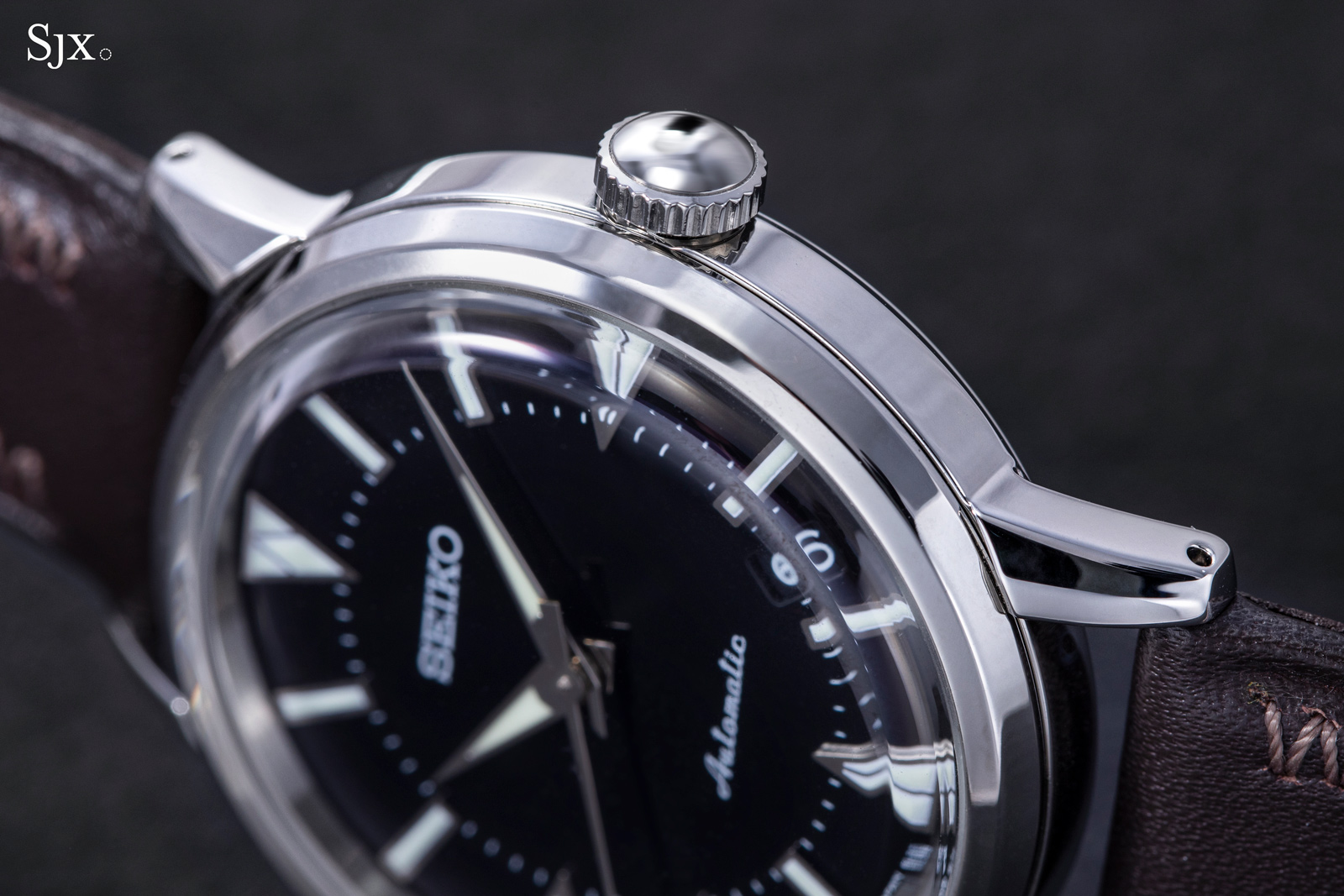
Also domed is the crystal, which is a “box section” sapphire crystal that calls to mind the PlexiGlas crystal on the 1959 watch
A visually interesting element are the lugs. They are thin and long, but made more interesting with wide, polished bevels on the top edge. That said, the distortion of the reflections on the surfaces of the lugs give away the the fact the case is simply stamped and polished.
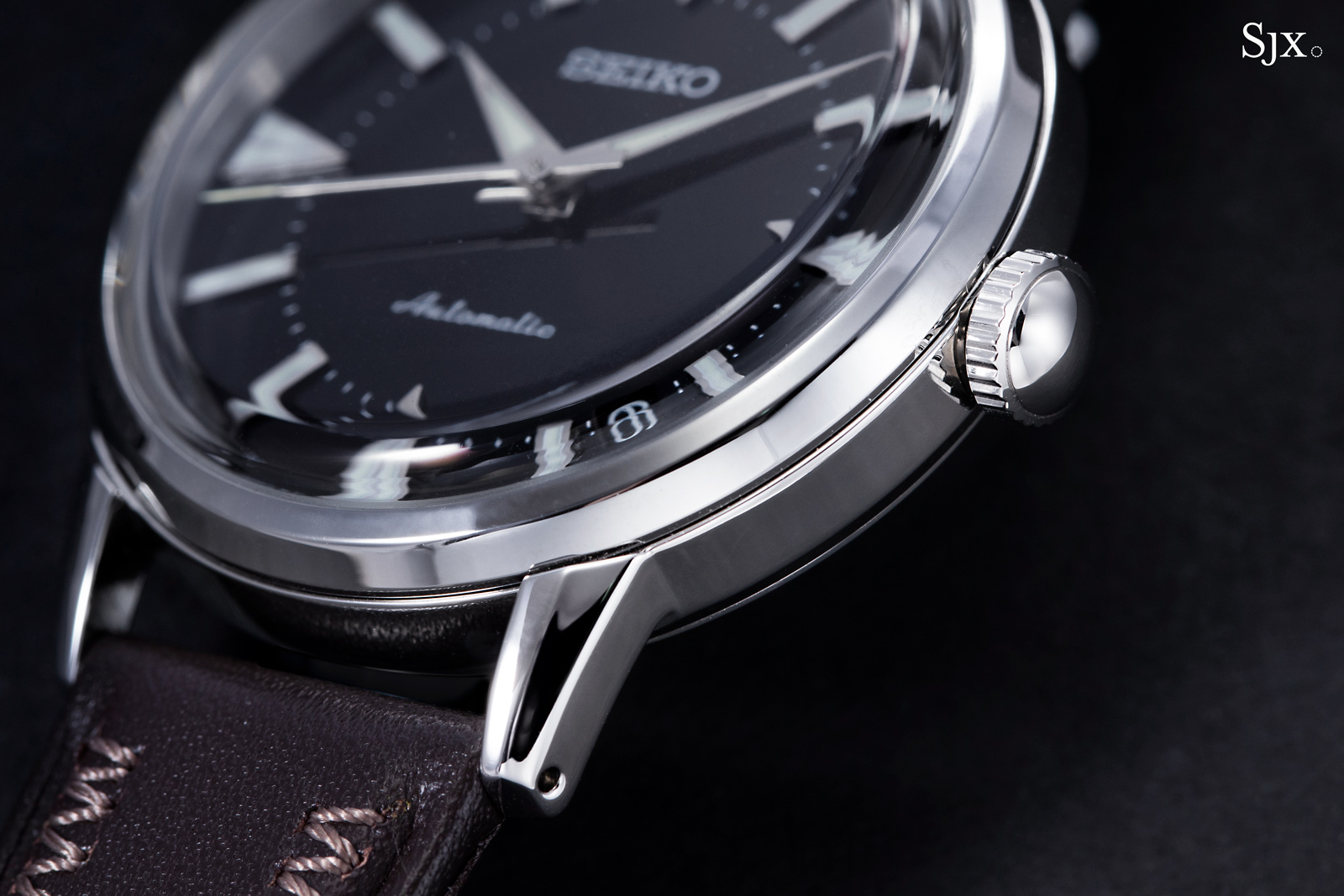
The case finishing is confusing, given that similarly priced models equipped with the same movement – the recent King Seiko KSK reissue SJE083 for example – typically have cases that are polished with the “Zaratsu” method that results in flatter surfaces.
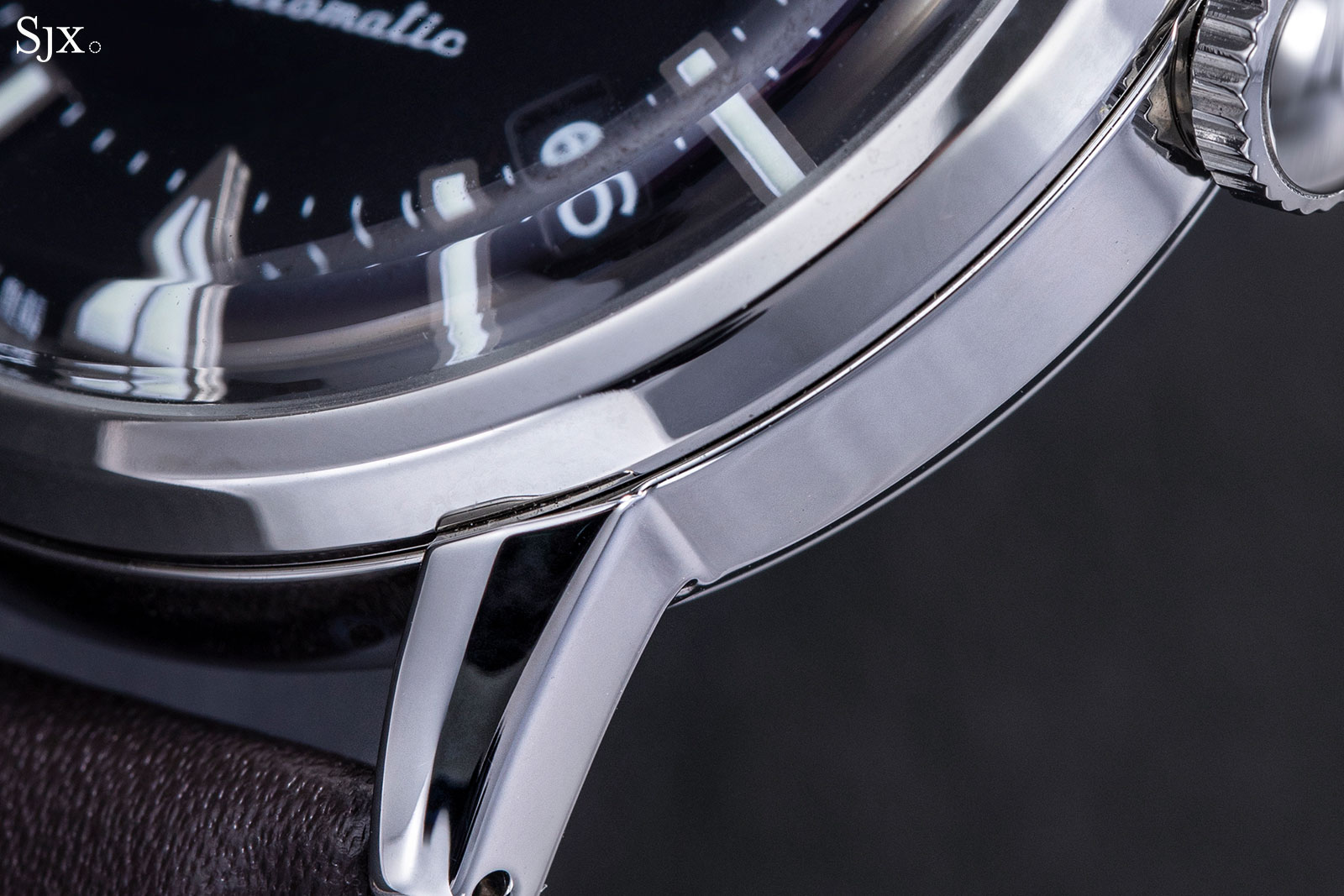
Deep, deep black
Perhaps the most attractive part of the watch is the piano-black dial. Deep and glossy – black enough the hands seem to float – the appeal of the dial is enhanced by its simple but smart design.
To start with, it’s heartening the designers decided against faux patina. While “aged” luminescent material or “tropical” dials are good looking, they lack the authenticity, while also being too common now. The carefully curated colour of faux patina is made to appeal to enthusiasts, but ironically diminishes its intrinsic appeal for the same reason.
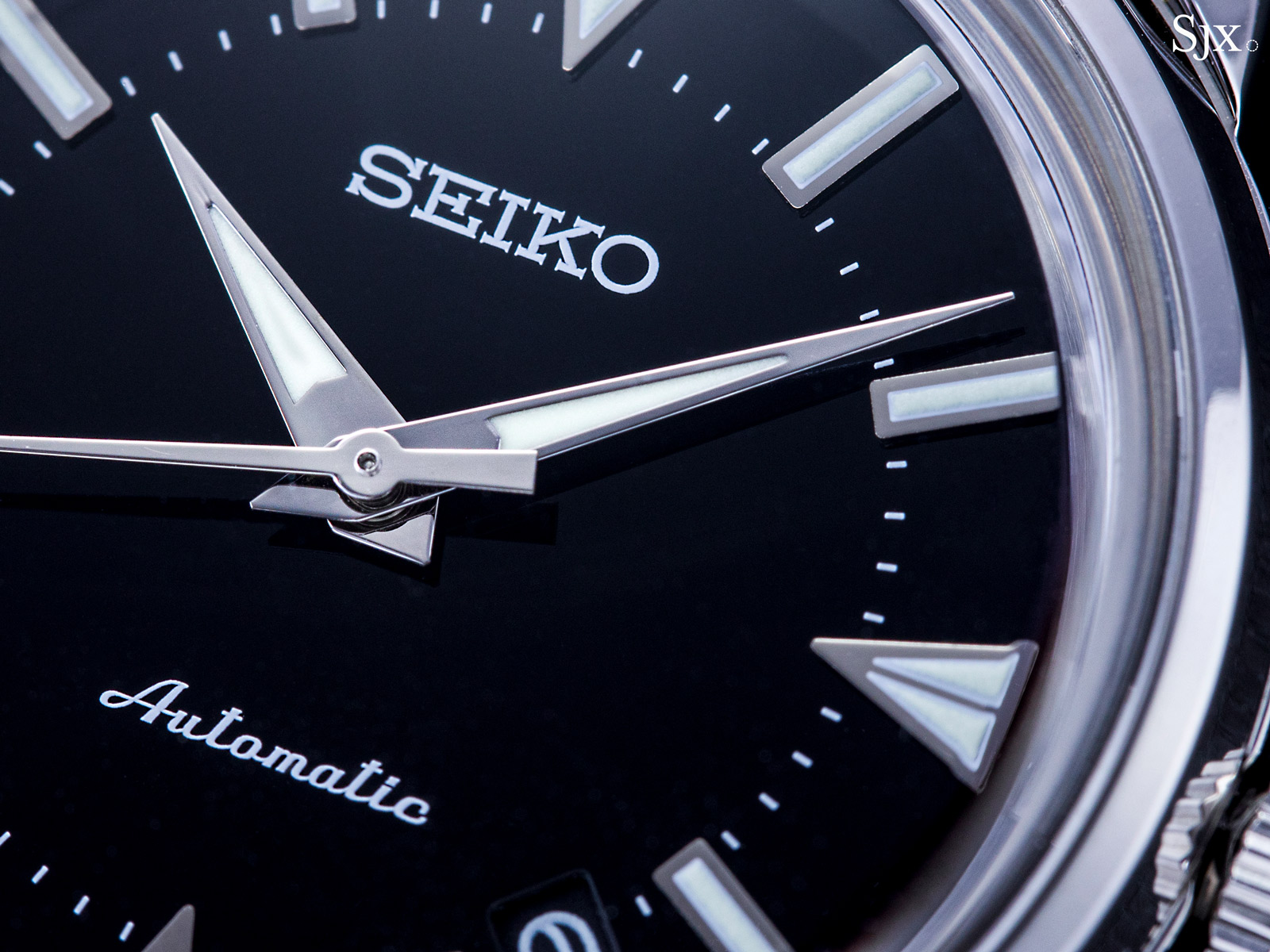
While clearly modern, the greenish lume on the Alpinist Re-creation does bring what radium would have looked like when fresh and still highly radioactive in the late 1950s. The green lume also complements the black dial, since both have a cool tone, which makes for a harmonious colour palette.
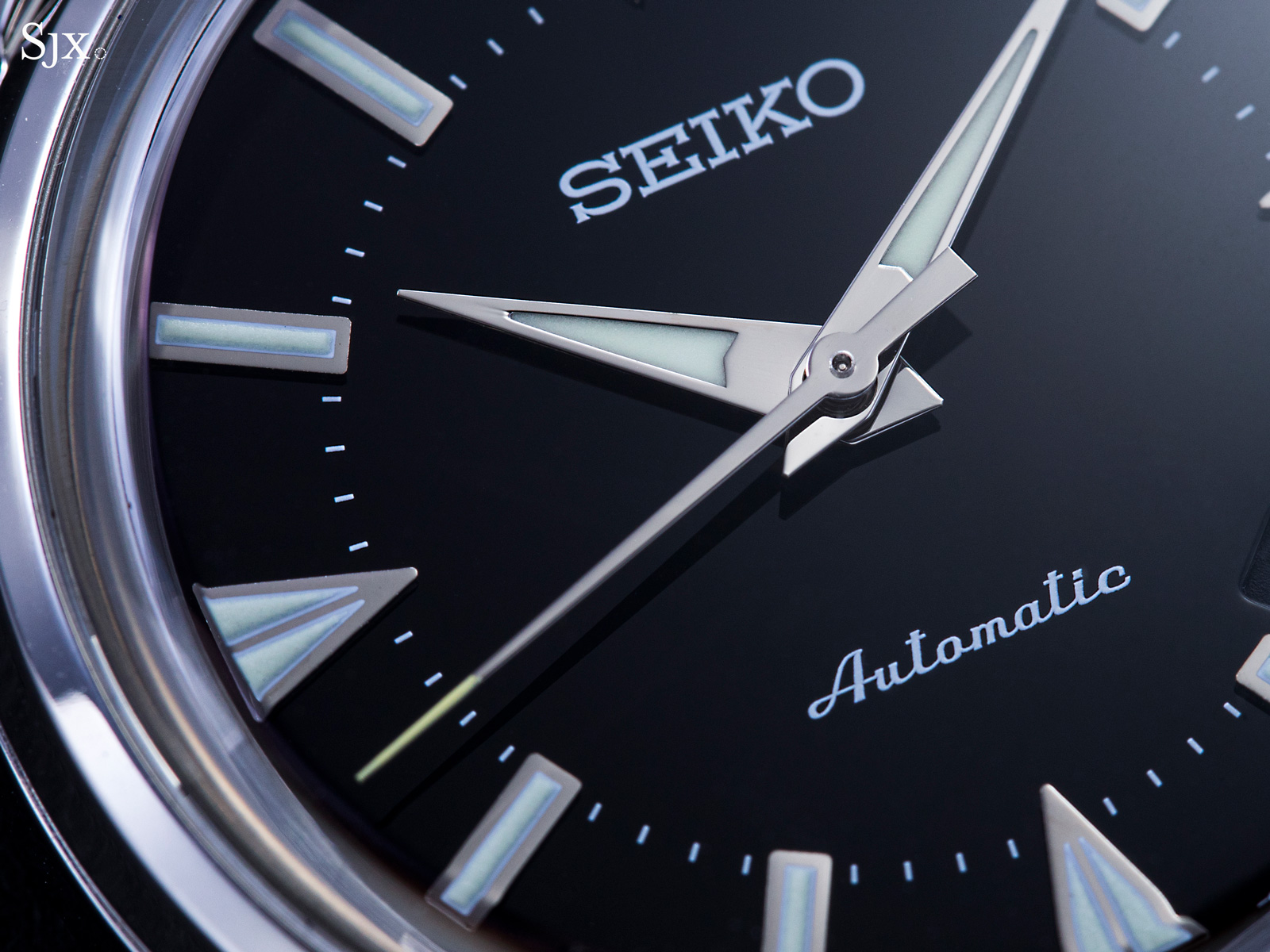
The tip of the second hand is covered with a tiny bit of lume
Though not obvious at a glance, the printed white minute track actually plays a major role in the design of the dial. It separates the dial into two rings – a chapter ring for the hour makers and a central section with text – while avoiding the empty expanse that accompanies a minute track on the outer edge of the dial.
But the dial layout doesn’t get a perfect score. “Automatic” at six should have been “Alpinist” instead, just as it was on the original. That would have given the watch more character – and in any case, buyers of this watch will know how the movement is wound.
And the second hand is actually longer than it needs to be, since the minute (or seconds) track is on the inner edge of the hour markers. On the vintage original the seconds hand is short to suit the inner track, but here it extends almost to the edge of the dial.
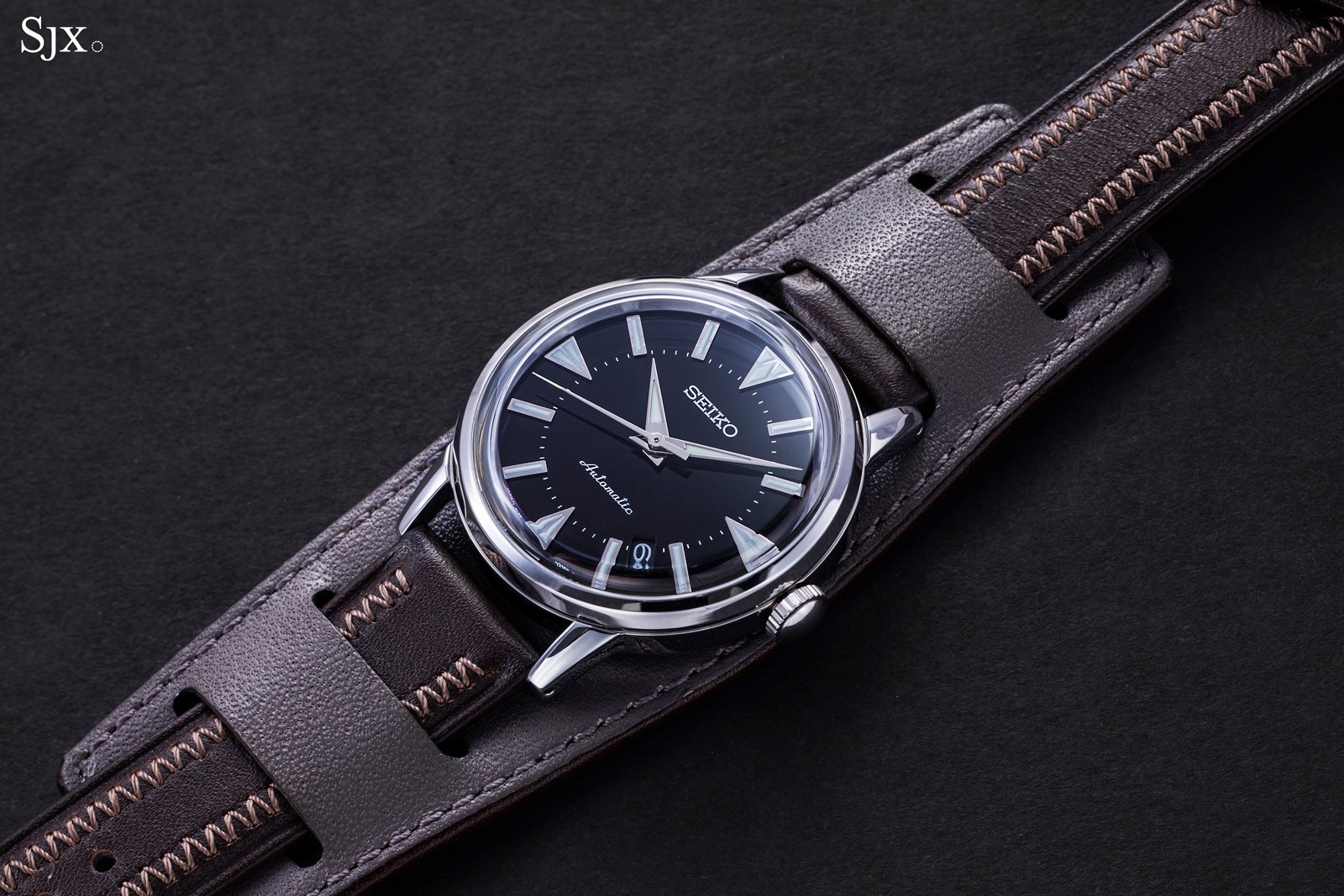
Like the case, the dial is simple in execution. The applied hour markers are stamped and polished, though their edges aren’t perfect. The result is a workmanlike finish.
But the markers have charm, in part because they resemble the hour markers found on the dials of some vintage Seiko dive watches, which were stamped from the back to create a relief effect.
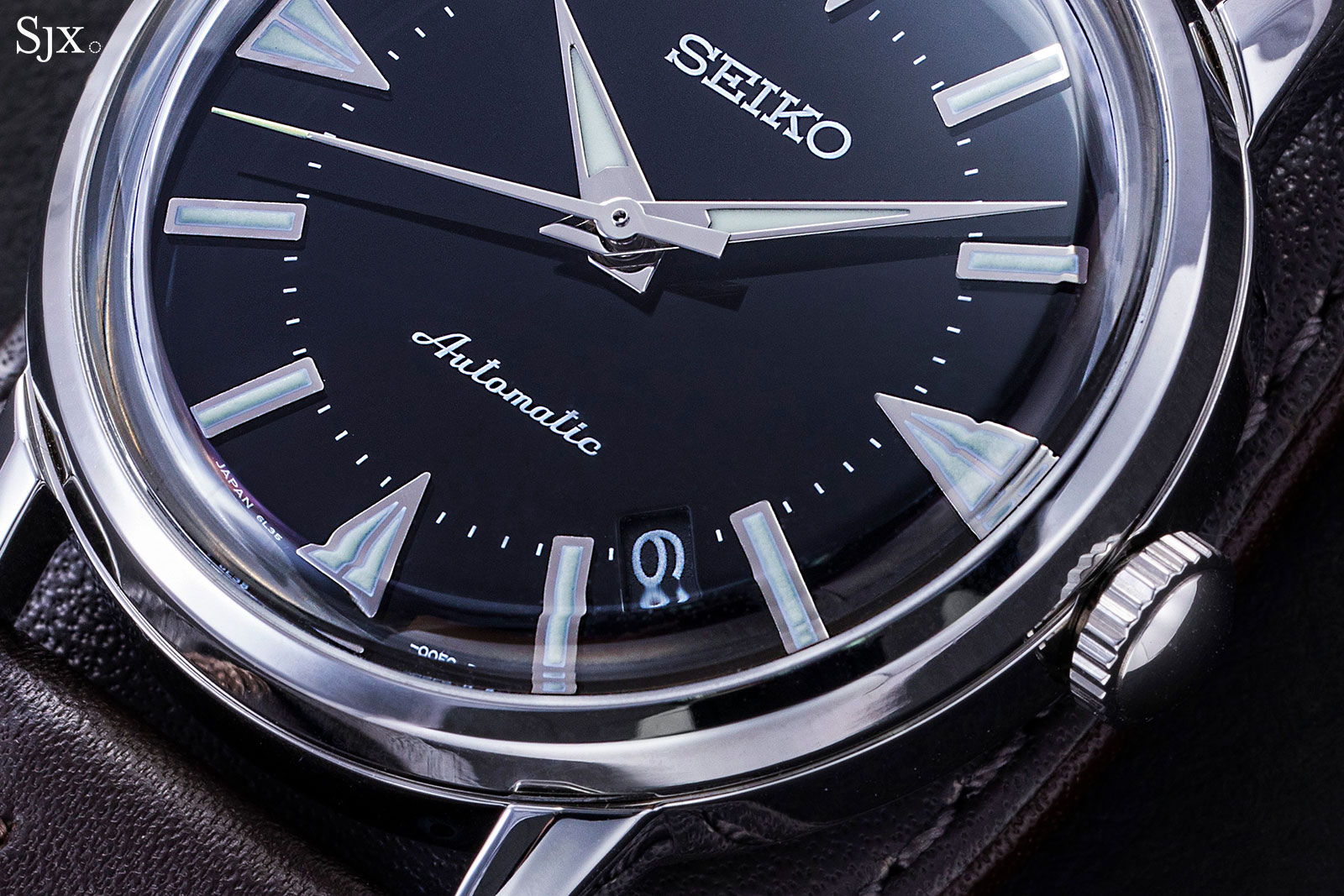
And the dial has an oddly placed date; more on that below
That said, the finishing of the hour and minute hands are too simple. The edges of the hands appear softer compared to those of the the markers – thicker hands cut with a diamond-tipped tool would certainly have given them more definition and refinement.
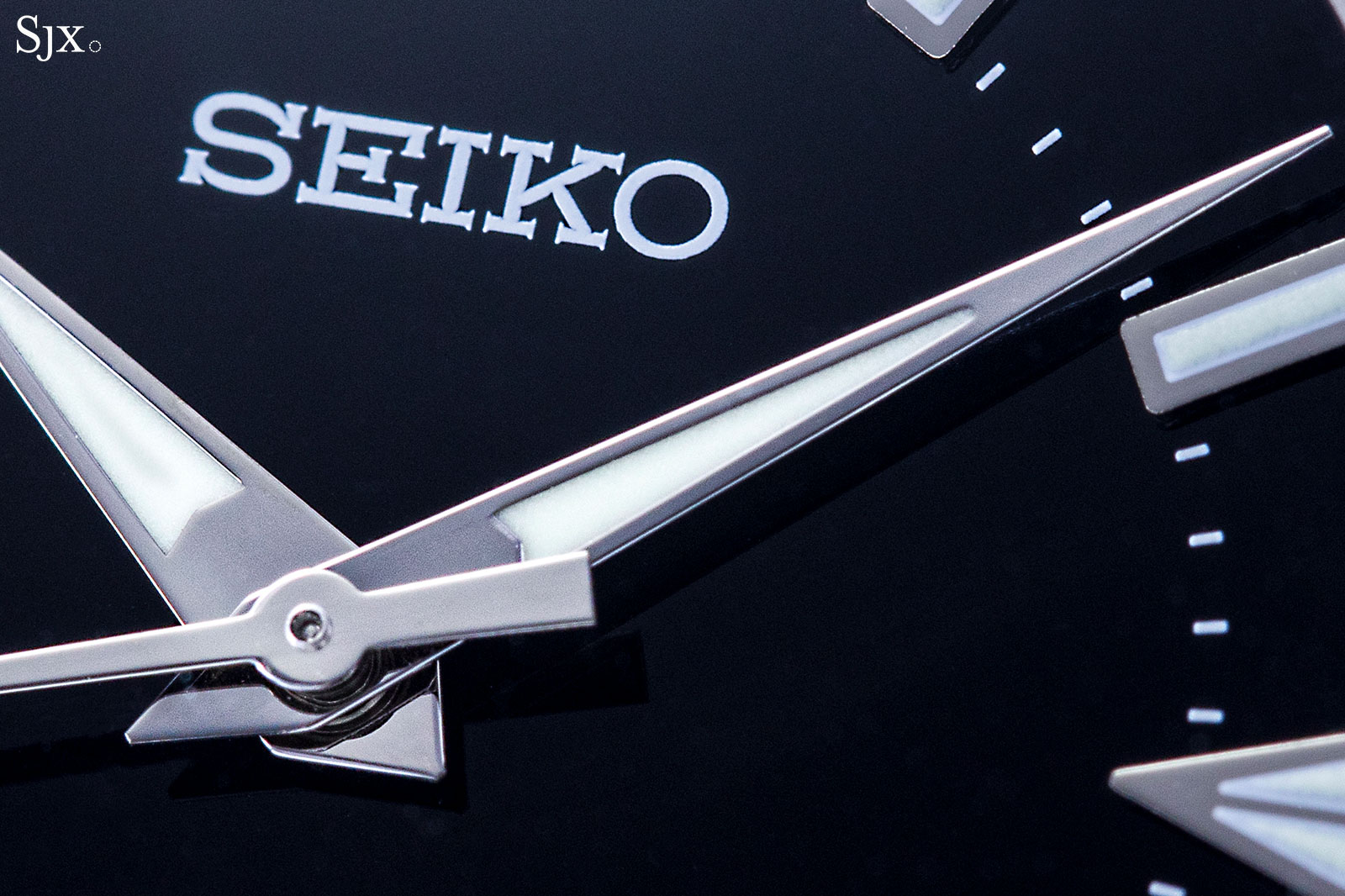
High(er) beat
The 6L35 inside is hidden under a screw-down steel back, which is concentrically brushed in its centre and polished on its edge.
The central part of the back is etched with the material, calibre, and brand in strangely large font, making them seem out of place. But that was the typography on the vintage original, though there the markings were engraved rather than shallowly etched as they are on the Alpinist Re-creation.
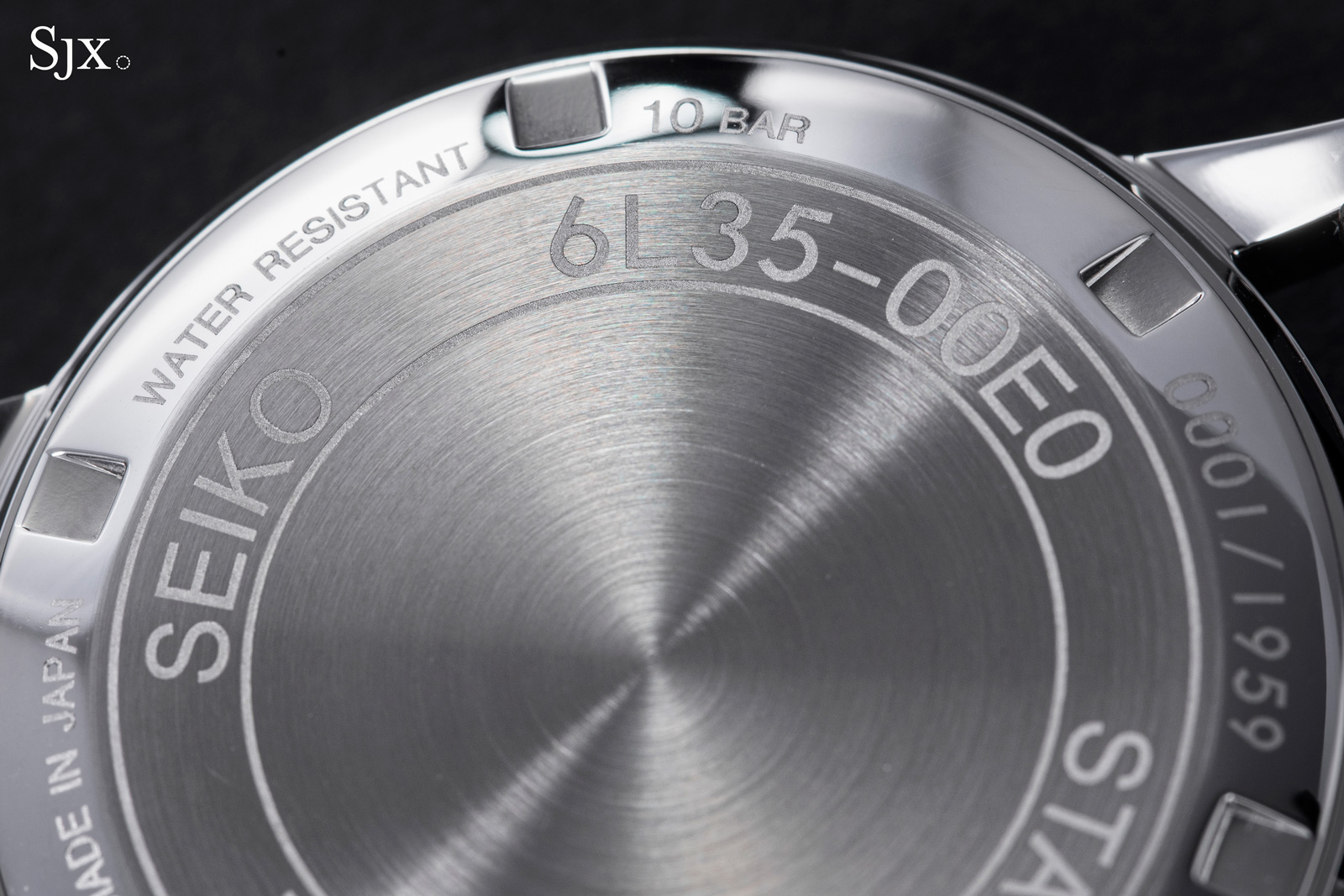
The cal. 6L35 was reputedly developed as a drop-in substitute for the ETA 2982, explaining the similar thickness, beat rate, and power reserve (and it also became the foundation of the Soprod A10, a Swiss-made movement that is actually marketed as a substitute for the ETA 2892).
As a result, the cal. 6L35 is one of the few Seiko movements in its class that runs at 28,800 beats per hour (or 4 Hz), as most Seiko movements run at a lower 21,600 beats per hour.
The movement isn’t especially small, but the date is for some reason positioned awkwardly. The date window sits at an unusual position – in between four and five o’clock, but closer to four. So it ruins the symmetry of the dial, and also sits asymmetrically between the two hour markers.
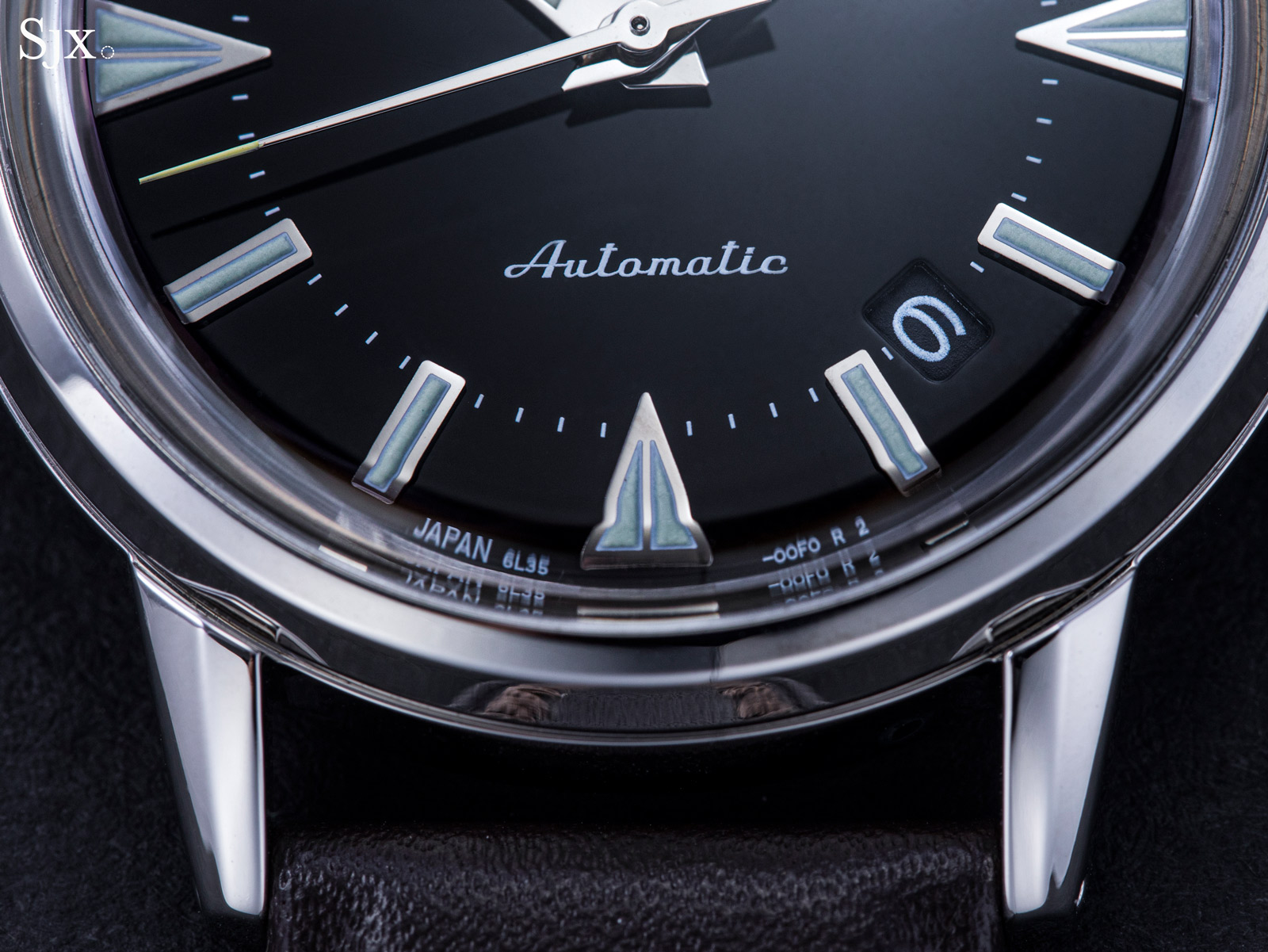
The date window is a simple cut-out without a metal frame, which helps it blend into the dial
Conclusion
The 1959 Alpinist Re-creation has more charm than the typical modern Seiko, though it’s clearly more vintage in feel than modern. It’s clean, simple, and compact, an uncommon combination in the brand’s current catalogue.
While the design scores well, several of its details could be improved, given the hefty price of just under US$2,900. That puts it in a category with strong competition; the US$2,100 Longines Heritage Silver Arrow is an obvious candidate.
To be fair, the Alpinist Re-creation is a good watch by many measures, but it isn’t quite the same value proposition as other current offerings from Seiko. All in all, it’s a pleasing watch that will no doubt win over many Seiko enthusiasts, primarily because of its evocative, historical design.
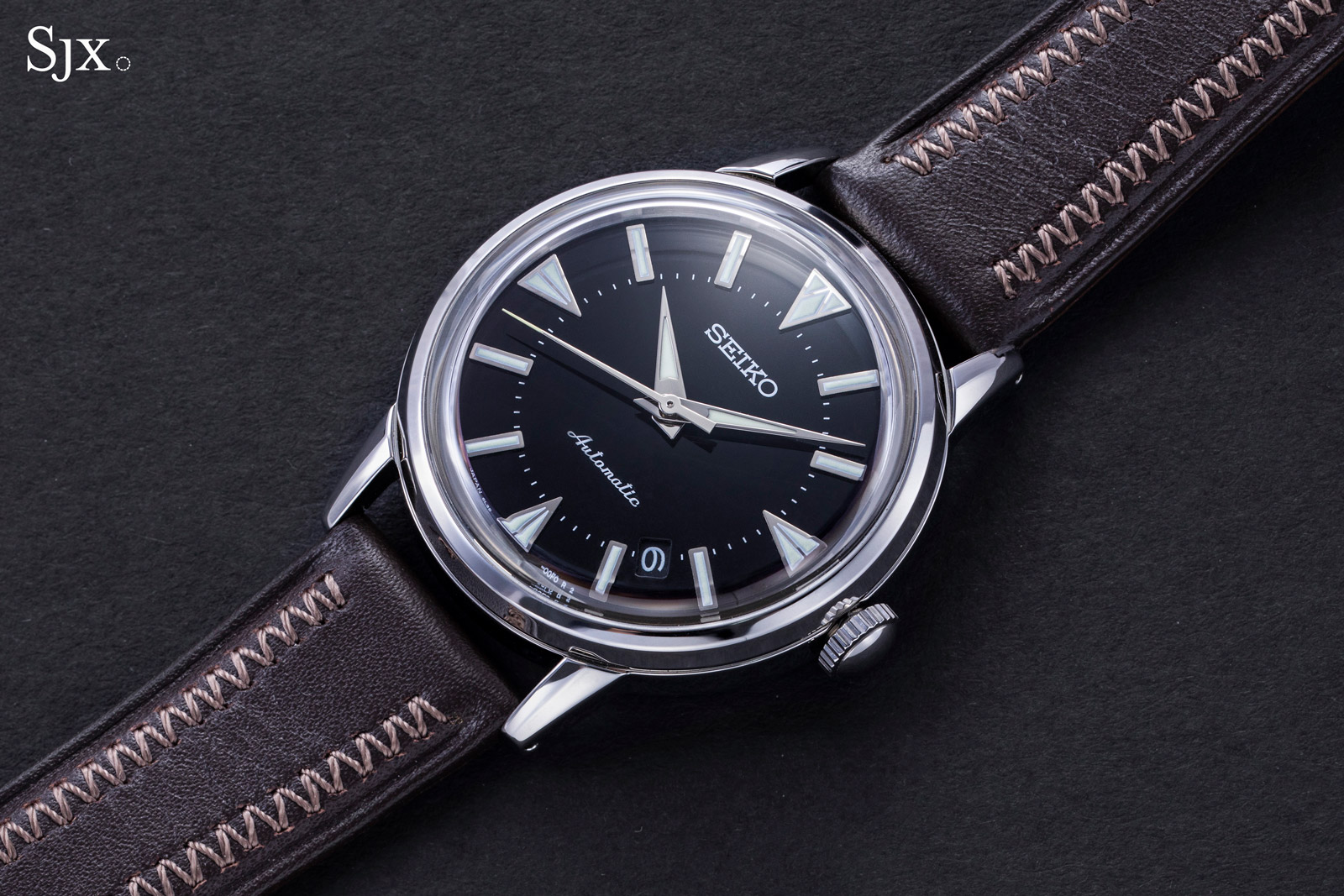
Key facts and price
Seiko Prospex The 1959 Alpinist Re-creation
Ref. SJE085 (SBEN001 in Japan)
Diameter: 36.6 mm
Height: 11.1 mm
Material: Steel
Crystal: Sapphire
Water resistance: 100 m
Movement: 6L35
Features: Hours, minutes, seconds, and date
Frequency: 28,000 beats per hour (4 Hz)
Winding: Automatic
Power reserve: 45 hours
Strap: Calfskin
Limited edition: 1,959 pieces
Availability: Now at Seiko boutiques and retailers
Price: US$2,850, or 330,000 Japanese yen
For more, visit seikowatches.com.
Back to top.

